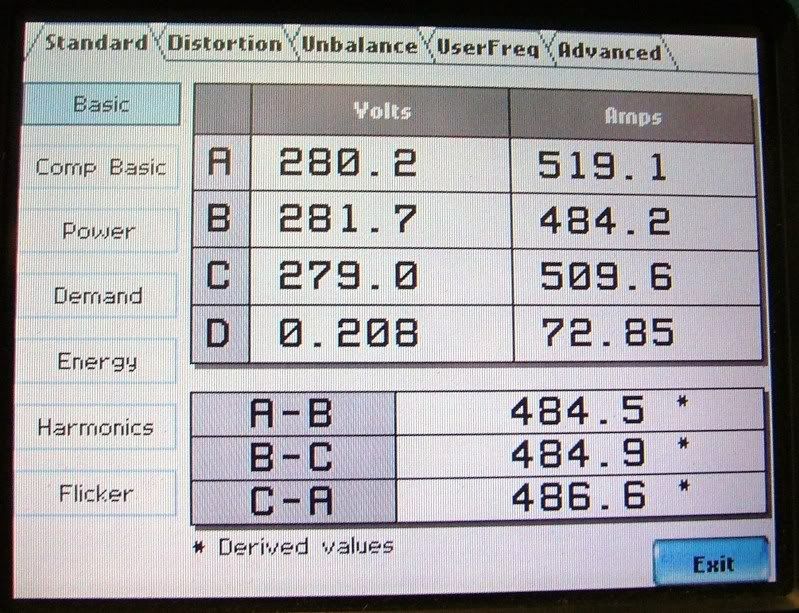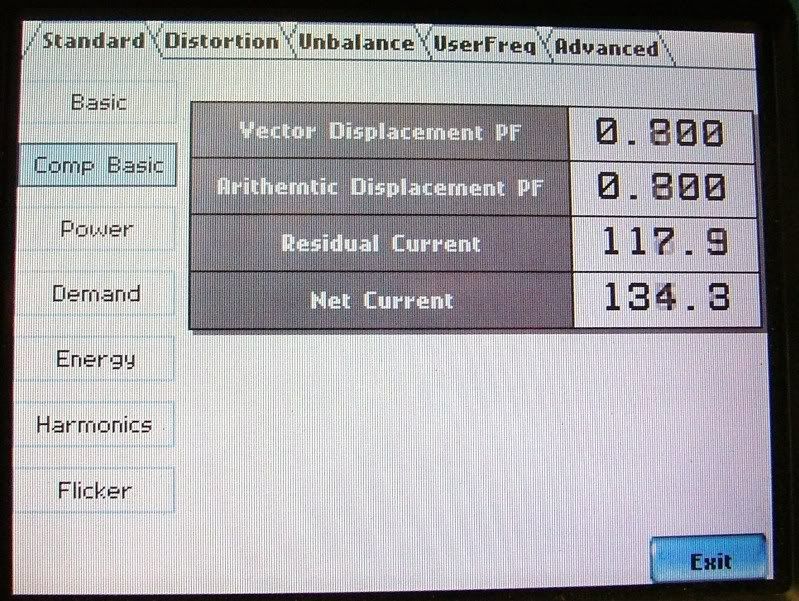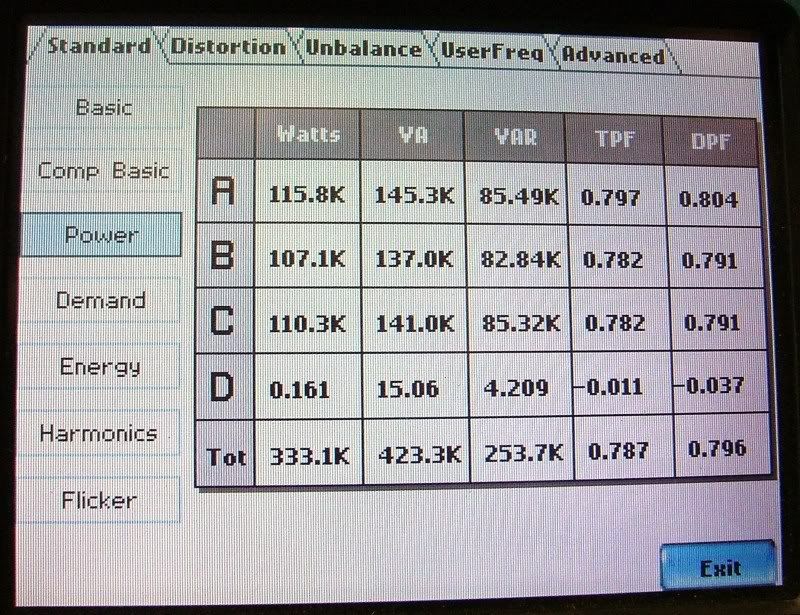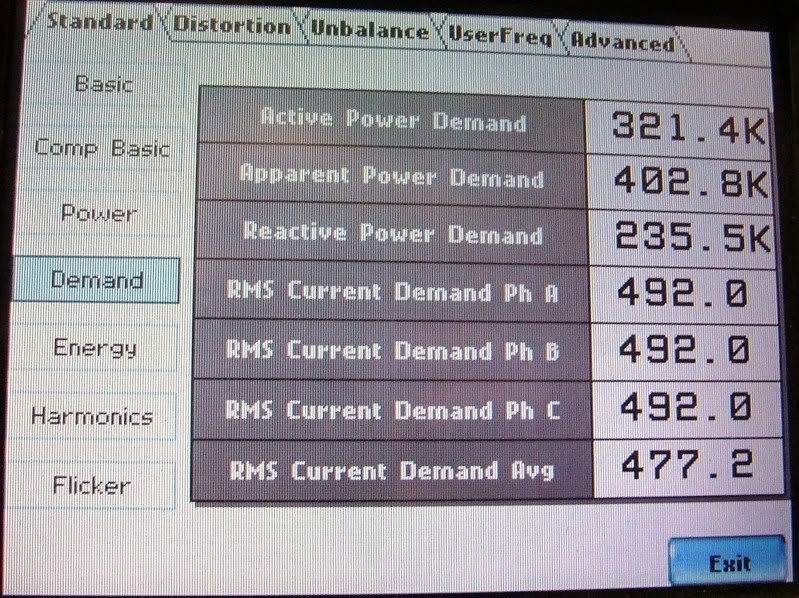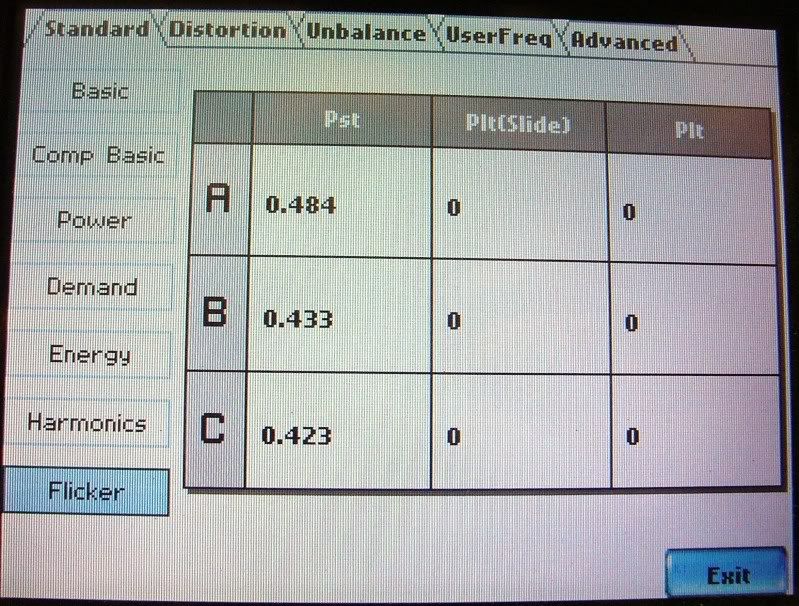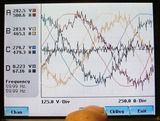A lot of multimeters have capacitance meters on them - even some of the really cheap ones. I'm not sure exactly how many "Farads" a 20 KVAR cap (or a 200 KVAR cap) should be, but it should be something that can be calculated, or maybe CH can tell you. The discharge resistors might throw off a cheap meter also, while a good meter will still read the capacitance, and show the parallel resistance as a "quality" factor.
If you are worried about tripping the main, you could always take the unit back to the shop. I don't see any reason why a 480V cap couldn't be connected to 208V.
And if you are concerned about an arc flash, you could connect power to the caps one at a time through a 40A or smaller breaker.
You could always verify the capacitor values using a lower voltage (fusing the input, of course). You would check one module at a time.
The calcs use the same formulas you would use for any set of capacitors. These are not some mysterious black-box capacitors secreted from behind the iron curtain

,so no need to call CH unless you want the exact value (the bank rating is most likely a rounded number). The currents will tell you if the capacitors are balanced.
You can have capacitors connected delta or wye. You can always find and equivalent wye or delta circuit. The formulas are (I have used some odd notation in the hopes it will clarify):
Capacitor Values & Rating (f is frequency):
Xc = 1 / (2 * Pi * f * C)
Xc_Wye = 3 * Xc_Delta
Xc_Delta = Xc_Wye / 3
Delta Connected:
kvar_total = 3 * V_line-line * Ic_delta / 1000
Ic_delta = I_line / sqrt(3) = VLL / Xc_delta
kvar_total = 3 * VLL^2 / (1000 * Xc_delta) = 3 * VLL^2 * 2 * Pi * f * C_delta / 1000
kvar_delta_leg = VLL^2 / (1000 * Xc_delta) = VLL^2 * 2 * Pi * f * C_delta / 1000
Wye Connected:
kvar_total = sqrt(3) * VLL * Ic_wye / 1000
Ic_wye = I_line = VLL / (sqrt(3) * Xc_wye)
kvar_total = VLL^2 / (1000 * Xc_wye) = VLL^2 * 2 * Pi * f * C_wye / 1000
kvar_wye-leg = VLL^2 / (3 * 1000 * Xc_wye) = VLL^2 * 2 * Pi * f * C_wye / (3 * 1000)
Example using Iwire's bank:
Looking at the pictures, you have 10 paralleled modules. The total is 200 kvar so that gives you 20 kvar per module, so:
20 = 3 * 480^2 * 2 * pi * 60 * C_delta / 1000 giving a value of 76.75uF per capacitor in each leg of each module.
Xc_delta = 1 / (377 * 76.75E-6) = 34.56
I_line = sqrt(3) * Ic_delta = 1.732 * 480 / 34.56 = 24.06 amps (241 amps for the complete bank).
So what if we hook one module up to a 120/208 3 phase source for a test?
I_line = sqrt(3) * Ic_delta = 1.732 * 208 / 34.56 = 10.42 amps. We would want protection for about 150% of this value (15.6 amps) so use a 20 amp fuse or breaker.

